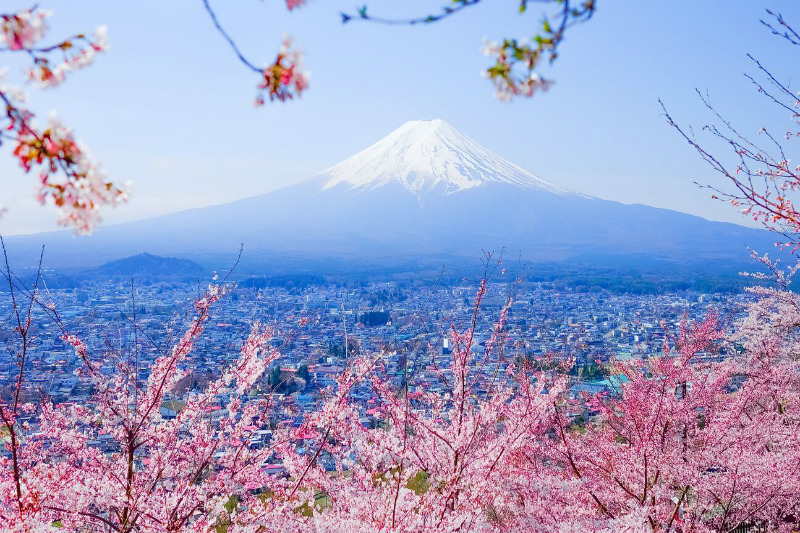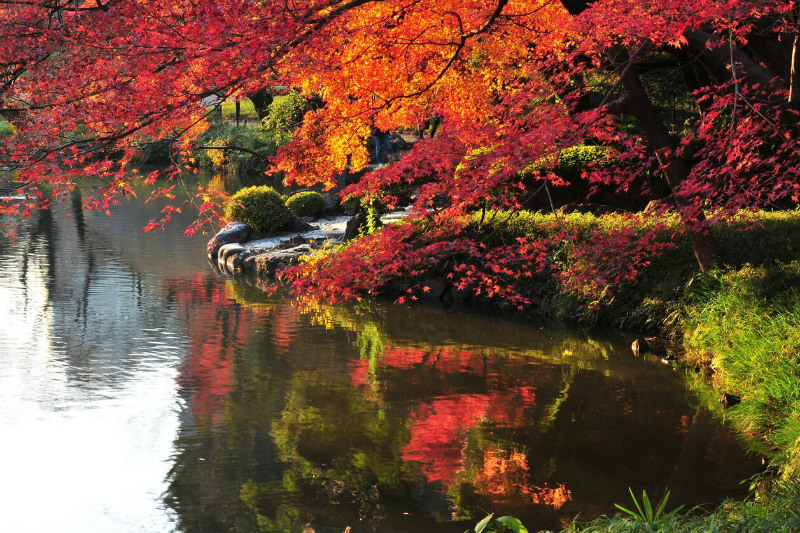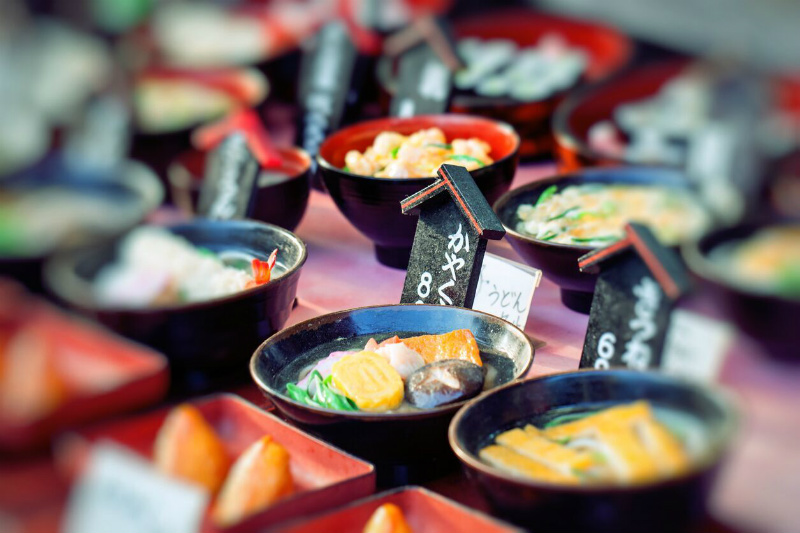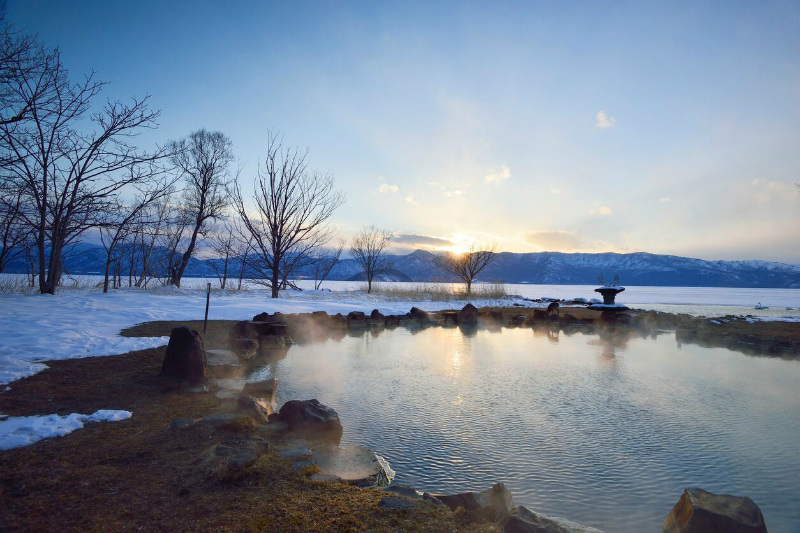LIFESTYLE ZONE
DESTINATION OF THE MONTH
TOKYO: A MEGACITY ROOTED IN TRADITION.
Tokyo blends traditional and futuristic like nowhere else on earth. While its neon cityscape looks like the set of a sci-fi film, step around the corner and you’ll find ancient temples, old-world wooden buildings and tiny alleys. Tokyo is an ultra-modern city built on old patterns – even its tallest skyscraper, the Tokyo Sky Tree, draws on ancient building techniques. You can visit centuries-old cherry blossom trees or climb a skyscraper and look beyond the space-age city lights to mystical Mount Fuji. If you’re considering a trip to Tokyo, here are our must-dos for experiencing its unique blend of old and new.

Tokyo, where ancient and modern worlds collide.
Find tradition in Tokyo
The most surprising thing about a city obsessed with all things new is how deeply rooted it is in tradition. It’s the only place you’ll find the gates to a centuries-old shrine between two glass skyscrapers, or a lane of wooden low-rise houses and traditional shops around the corner from a neon-lit, billboard-lined square. If you think high-tech and antiquity can't work together, think again. In a city where the day is timed by the rising and setting sun, Tokyo has the fusion of old world with new down to a fine art. Here’s where to find traditional Tokyo culture.
Visit the Forest Shrine
Behind Harajuku station is one of Tokyo’s most important shrines, Meiji Jingu. Walk down a winding path, through towering wooden gates, stopping to purify yourself at the temizu-ya (font) before making an offering. Time your visit to catch the twice-daily ceremonial offering of food and prayers to the gods.
Seek out Tokyo's most-visited temple
Walking to Sensō-ji is almost as amazing as the huge five-storey pagoda itself. Through the fantastic Thunder Gate (the Kaminarimon), with its statues of Buddhist gods and a beautiful carved dragon, along the busy shopping street Nakamise-dōri lined with stalls selling tourist trinkets and Edo-style crafts, you’ll find Sensō-ji, Tokyo’s most-visited temple.
See the cherry blossoms
Just a short hop from the neon blare of Shibuya, Nakameguro is a traditional neighbourhood of tiny alleys and old-fashioned wooden buildings. In eastern Tokyo, Yanaka’s wooden houses, temples and shrines stand still in time. In spring, you’ll find some of the most stunning cherry blossoms in both neighbourhoods, usually at their most spectacular at the very end of March into the first few days of April.
Wander through a traditional garden
Much more than the usual city park, Tokyo’s gardens are treasured havens. From the picturesque waterside Kiyosumi Garden, landscaped park Hamarikyu, to Tokyo’s oldest park Koishikawa Korakuen and the majestic gardens of the Imperial Palace, the flowers, bonsai, boulders, teahouses and koi carp are all part of Japan’s world-renowned garden culture.

Koishikawa Korakuen: Tokyo’s carefully preserved park from the Edo Period.
Try traditional Japanese dishes
Like everything in Tokyo, dining is a modern-meets-traditional experience. Here are four places where you’ll discover Japan’s culinary culture.
d47 Shokudō
On the eighth floor of Shibuya's modern Hikarie building is d47 Shokudō. Named after Japan’s 47 prefectures (or districts), this restaurant will take you on a culinary journey without leaving your table. The menu doubles as a travel guide, introducing each prefecture and its speciality dishes, from the fermented tofu of Okinawa to Hokkaido’s stuffed squid.
Kosoan
This enchanting restaurant in an immaculate 100-year-old Japanese house feels like an authentic slice of Japanese culture. Try the finest matcha tea and exquisite wagashi (traditional sweets), while sitting barefooted in a tatami-floored, wooden-panelled room decorated with antique furniture, hanging scrolls and traditional art and relics.
Kado
Just a short walk from Kagurazaka Station, you’ll spot Kado by its impressive wooden gate and white lantern hanging out front. Specialising in home cooking, this casual kappo restaurant serves seasonal specials. You can also stand at the bar for sake and snacks.
Depachika
Tokyo's depachika are the best places to discover what Japanese people really eat. Spread out across the basement of Tokyo’s department stores, these food courts have delicatessen-style counters serving traditional bento boxes and home-cooked delicacies, from sushi to cute sweets in beautiful packaging.

Depachika: a wonderland of sights, smells and tastes
Tokyo days out
With excellent public transport and spectacular Japanese landscape just beyond the city’s limits, it's well worth taking a day out from Tokyo to explore one of these wonders.
Mount Fuji
Of all Japan's icons, Mount Fuji is the real deal. Centuries of awe have held Fujisan as stairway to heaven, holy ground, and home to deities and ancestors. Tours take you from Tokyo to either climb the mountain, or see it from the Shinkansen train – providing it’s not shrouded in cloud.
Hie Shrine
Sandwiched between modern skyscrapers are the red gates of Hie Shrine. This beautiful, peaceful shrine traces back to the 15th century as the protector of Edo Castle. In June, experience the Sanno Matsuri festival, with its parade that starts and finishes at the shrine.
Kamakura
Just an hour from Tokyo, Kamakura’s glory days coincided with the spread of Buddhism in Japan. You can see the evidence in the many beautiful temples and its earthy vibe. Hike from shrine to temple through beautiful mountains and valleys, hang out at the beach, or stroll through the bustling town.
Nagatoro
This small, scenic town is a prefectural nature park and preserve of unspoiled natural scenery, where you can hike, take a river boat tour or try water sports. Ride the traditional Chichibu Railway, stopping near the small, historic station for soba noodles made from locally grown buckwheat using age-old family recipes.
Beyond Tokyo
One of the best ways to experience Japan’s mix of old and new is by visiting Tokyo, and then travelling through the incredible Japanese countryside to another fascinating town or city, each one with its own appeal. You can fly with THAI from Sapporo, Osaka, Nagoya or Fukuoka, making it easy to travel in Japan and head home from a different destination for a complete Japan experience
Sapporo
Whatever time of year you visit, Sapporo will entertain you. With summer-time beer and food festivals and its famous February Snow Festival, this dynamic urban centre has a thriving foodie scene, energetic nightlife, and superb shopping. From Sapporo, travel to Tokyo via the famous Hokkaido mountains and hot springs.
Osaka
Osaka has a fun nickname – tenka no daidokoro, translating roughly as 'the nation's kitchen'. Once referring to its status in the Edo period as Japan's rice-trade hub, it’s now a nod at the city’s reputation as a foodie haven. It's the gateway to Kyoto, so you’ll travel through old-world scenery to reach this friendly city.
Nagoya
The birthplace of Toyota doesn’t sound like somewhere to seek old-world Japanese tradition, but the city of Nagoya has fantastic museums, significant temples and excellent shopping. Nestled between Tokyo and Osaka, it’s the gateway to Chūbu's big-mountain heart and a great base for day trips.
Fukuoka
With 2,000 years of history, zen gardens and temples, Fukuoka is regenerating, fast becoming one of Japan’s most exciting cities, and so much more than a gateway to Kyūshū. Local highlights include the beaches in nearby Itoshima, and the food is exceptional – tonkotsu ramen supposedly originated in Fukuoka and is a must-eat here.

Hot springs just south of Sapporo.
Flying with THAI
Fly with THAI for flexible travel to and from Japan. Fly straight into Tokyo and enjoy a stay there before returning home. Alternatively, you can plan a multi-stop holiday flying to Tokyo, and then returning from Sapporo, Osaka, Nagoya or Fukuoka, or the other way around, finishing your trip in Tokyo with a range of flight times. And, as always with THAI, you'll be travelling in comfort, enjoying our award-winning service.
Check the timetable for full details of every flight to Japan or use our booking tool to find flights.
- Reservation & Ticketing Terms & Conditions Conditions of ContractCondition of CarriageOptional Services & Fees on Code Share FlightsBaggage PolicyCarbon OffsetAgency Debit Memo PolicyEU RegulationLost & Found





















